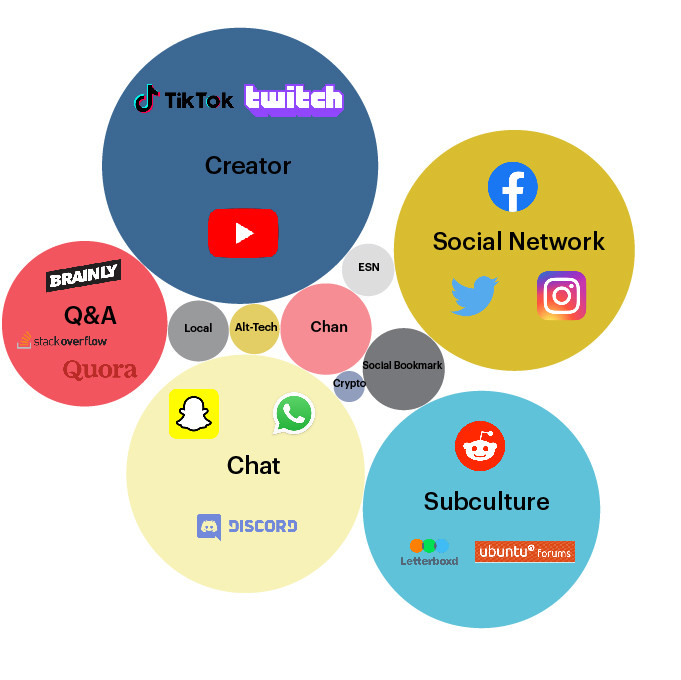Exploring What Is Fansly: The System Shaping Web Content Creation
Exploring What Is Fansly: The System Shaping Web Content Creation
Blog Article
How Social Network Operating Systems Have Actually Progressed: Analyzing Their Influence On Interaction and Advertising And Marketing Methods

Very Early Social Media Site Operatings Systems
It enabled individuals to create profiles, link with pals, and share web content, laying the groundwork for future platforms. Following this, systems like Friendster (2002) and MySpace (2003) gained appeal by introducing a lot more interactive features, enabling customers to tailor profiles, share songs, and engage in area building.
These early systems highlighted user-generated content and social networking, growing a feeling of on-line area. They showcased the capacity of digital interaction, permitting individuals to express themselves and link with others throughout geographical barriers. However, these websites also dealt with difficulties, such as technical constraints and the struggle to keep individual involvement.
The very early 2000s indicated an experimental age for social media, as programmers looked for to fine-tune the user experience and broaden performances. This period set the stage for the eruptive growth of social networks that would certainly follow, ultimately transforming communication and advertising techniques in unprecedented methods.
The Rise of Visual Material
As social networks systems evolved, a noteworthy shift happened towards the prominence of visual content, fundamentally altering individual involvement approaches. This improvement is largely attributed to the inherent human choice for visual stimulations, which can share messages much more effectively than message alone. Platforms such as Instagram, Pinterest, and Snapchat have taken advantage of this trend, prioritizing picture and video sharing to improve individual experience and communication.

In addition, the combination of functions like Stories and online streaming has allowed real-time involvement, allowing brand names to display their offerings dynamically. Analytics devices have actually further empowered marketing experts to assess efficiency metrics connected to aesthetic content, refining their methods based on target market preferences. Inevitably, the concentrate on visual interaction has redefined exactly how brands get in touch with their audiences, making it an important element of modern advertising strategies in the digital age.
The Impact of Influencers
Influencers have actually become essential figures in the landscape of social networks, reshaping just how brand names engage with their target markets and market their products. These people, commonly considered pacesetters, have the capacity to reach huge audiences and cultivate authentic relationships with their followers. Their viewed credibility and relatability allow them check to connect brand name messages in a way that reverberates deeply, causing enhanced consumer trust fund and commitment.
Brands significantly acknowledge the worth of influencer partnerships, commonly opting for targeted collaborations that line up with their worths and purposes. This tactical technique enables tailored marketing campaigns that take advantage of influencers' one-of-a-kind designs and content formats. Consequently, brands can successfully take advantage of niche markets and foster engagement that conventional marketing techniques often struggle to achieve.
Furthermore, the performance of influencer marketing is evidenced by its measurable effect on sales and brand name recognition. Metrics such as engagement rates, conversion prices, and target market development provide brands with insights into project performance. As influencers remain to evolve, they will stay indispensable to shaping communication approaches, driving customer habits, and redefining the marketing landscape within social networks systems.
The Shift to Short-Form Video
Current fads in social media have highlighted a considerable shift towards short-form video material, a style that has actually swiftly astounded audiences and redefined engagement strategies. Systems such click for more as TikTok, Instagram Reels, and YouTube Shorts have actually become frontrunners in this sensation, drawing customers in with easily absorbable and entertaining clips. This change reacts to the decreasing attention periods of consumers, that now favor fast, impactful messaging over longer stories.
Online marketers have actually acknowledged the capacity of short-form videos to enhance brand presence and foster link. These bite-sized items of content allow brand names to convey their messages succinctly while encouraging customer interaction through shares, suches as, and comments. In addition, the innovative adaptability intrinsic in short-form video-- ranging from narration to tutorials-- gives brand names with diverse opportunities for expression.
Because of this, firms are increasingly incorporating short-form video right into their marketing methods, commonly leveraging influencers to amplify reach and credibility. This advancement not only advertises better audience involvement yet likewise mirrors a broader pattern in the direction of visual interaction in the electronic landscape. Consequently, services must adapt to this vibrant setting to remain appropriate and reliable in their outreach efforts.
Data Personal Privacy and Customer Trust
Exactly how can social media sites platforms balance individual engagement with the essential of information privacy? This inquiry has come to be progressively important as customers express expanding worries over exactly how their personal details is made use of. In an era where information violations and personal privacy scandals dominate headlines, systems have to focus on openness and customer control to foster count on.
To achieve this balance, social media sites platforms should take on robust personal privacy policies that articulate data usage and protection steps clearly. Executing functions try this out that allow customers to tailor their personal privacy settings can empower individuals, allowing them to identify what info is shared and with whom. Transparency reports describing information requests and breaches can better boost individual count on.
Furthermore, systems can utilize honest data practices in their marketing approaches, concentrating on consent-based marketing models that focus on customer preferences. By employing anonymized information for analytics, systems can still offer important insights to online marketers without compromising user personal privacy.
Inevitably, the success of social networks platforms depends upon their ability to grow a credible environment. By prioritizing data personal privacy, they can not only enhance customer involvement however also place themselves as liable stewards of user details in a progressively data-sensitive landscape.
Conclusion
The advancement of social media platforms has substantially transformed interaction and marketing approaches. The shift from text-based communications to visual content and short-form videos has reshaped consumer interaction.
Report this page